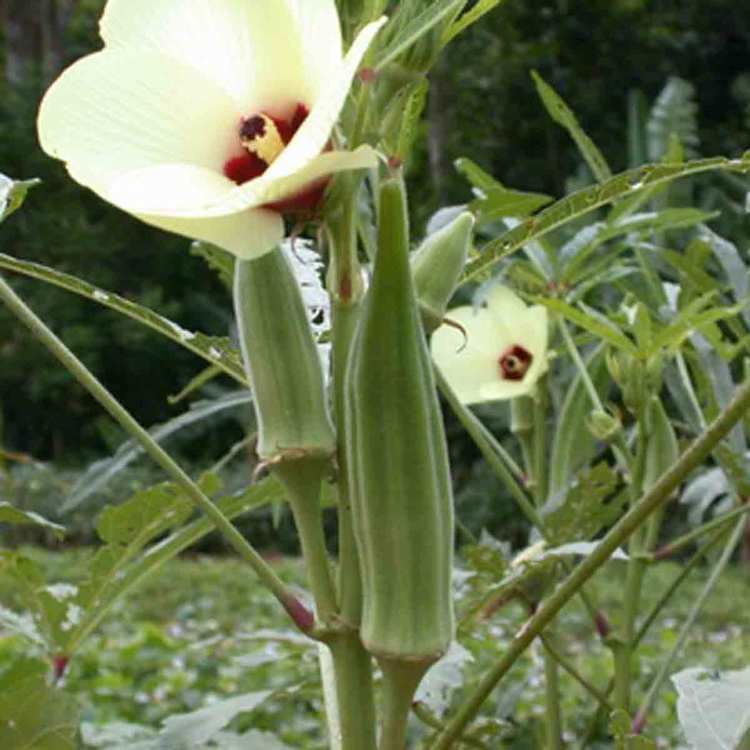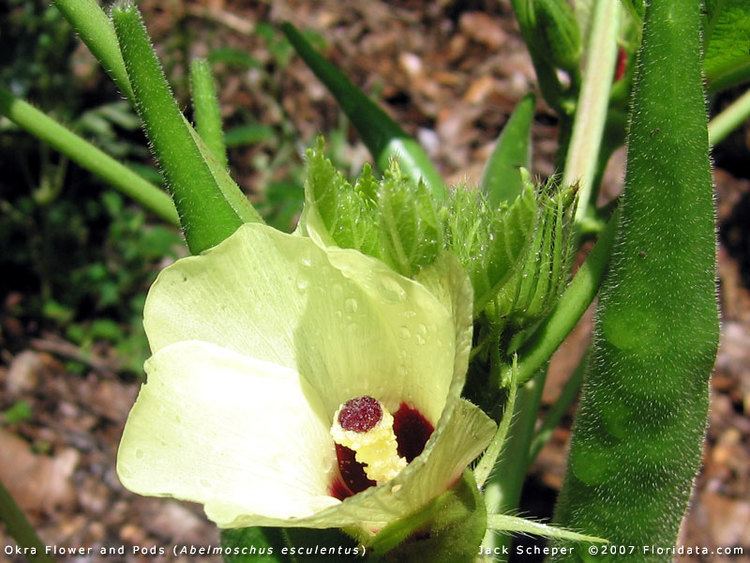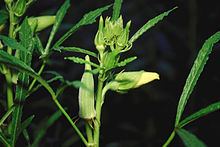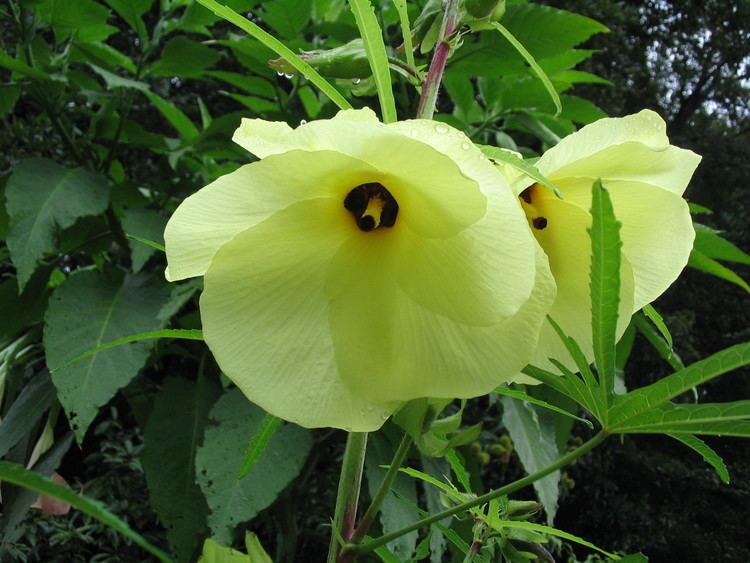Scientific name Abelmoschus Rank Genus | Higher classification Mallows | |
 | ||
Lower classifications Okra, Abelmoschus moschatus, Abelmoschus manihot | ||
Muskdana or ambrette india abelmoschus moschatus plants seeds
Abelmoschus is a genus of about fifteen species of flowering plants in the mallow family, Malvaceae, native to tropical Africa, Asia and northern Australia. It was formerly included within Hibiscus, but is now classified as a distinct genus.
Contents
- Muskdana or ambrette india abelmoschus moschatus plants seeds
- The edible hibiscus abelmoschus manihot
- Uses
- References

The genus comprises annual and perennial herbaceous plants, growing to 2 m tall. The leaves are 10–40 cm long and broad, palmately lobed with 3-7 lobes, the lobes are very variable in depth, from barely lobed, to cut almost to the base of the leaf. The flowers are 4–8 cm diameter, with five white to yellow petals, often with a red or purple spot at the base of each petal. The fruit is a capsule, 5–20 cm long, containing numerous seeds.

Abelmoschus species are used as food plants by the larvae of some Lepidoptera species including Chionodes hibiscella which has been recorded on A. moschatus.

The edible hibiscus abelmoschus manihot
Uses
Several species are edible, with both the young seed pods and the young leaves being eaten as a vegetable. The most important commercially-grown species is okra.
Abelmoschus manihot (aibika) furnishes cordage like jute, and Abelmoschus moschatus (musk mallow) is grown for musk seeds (musk ambrette, which causes photoallergy).
